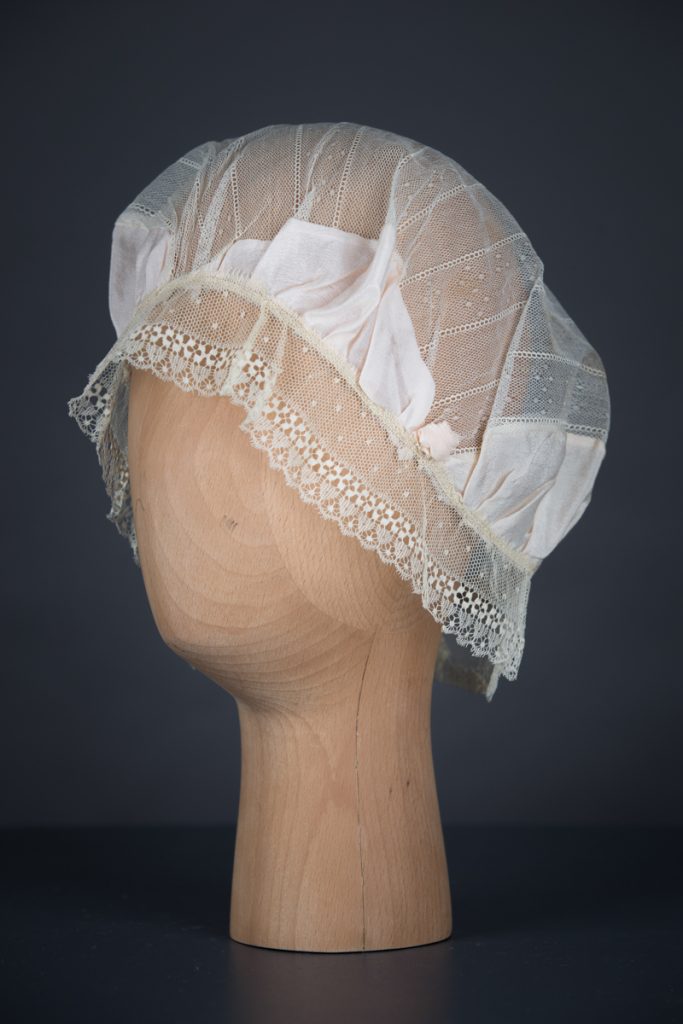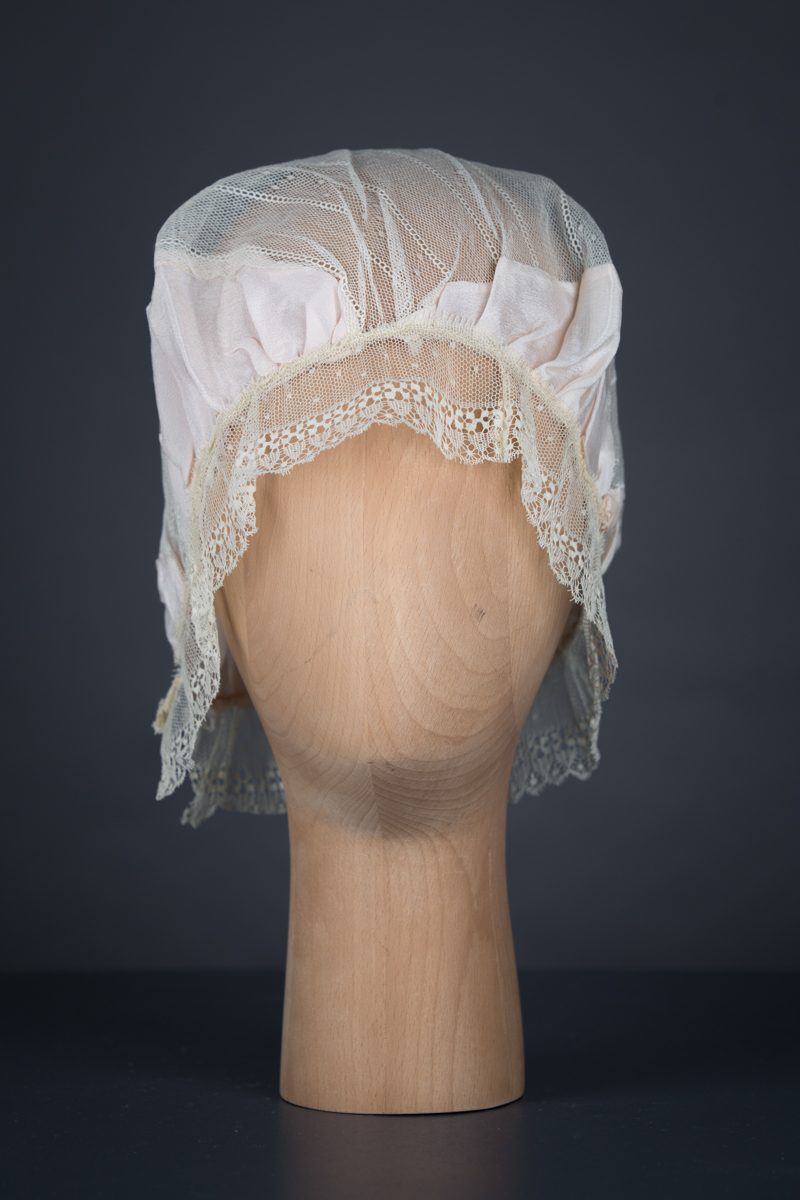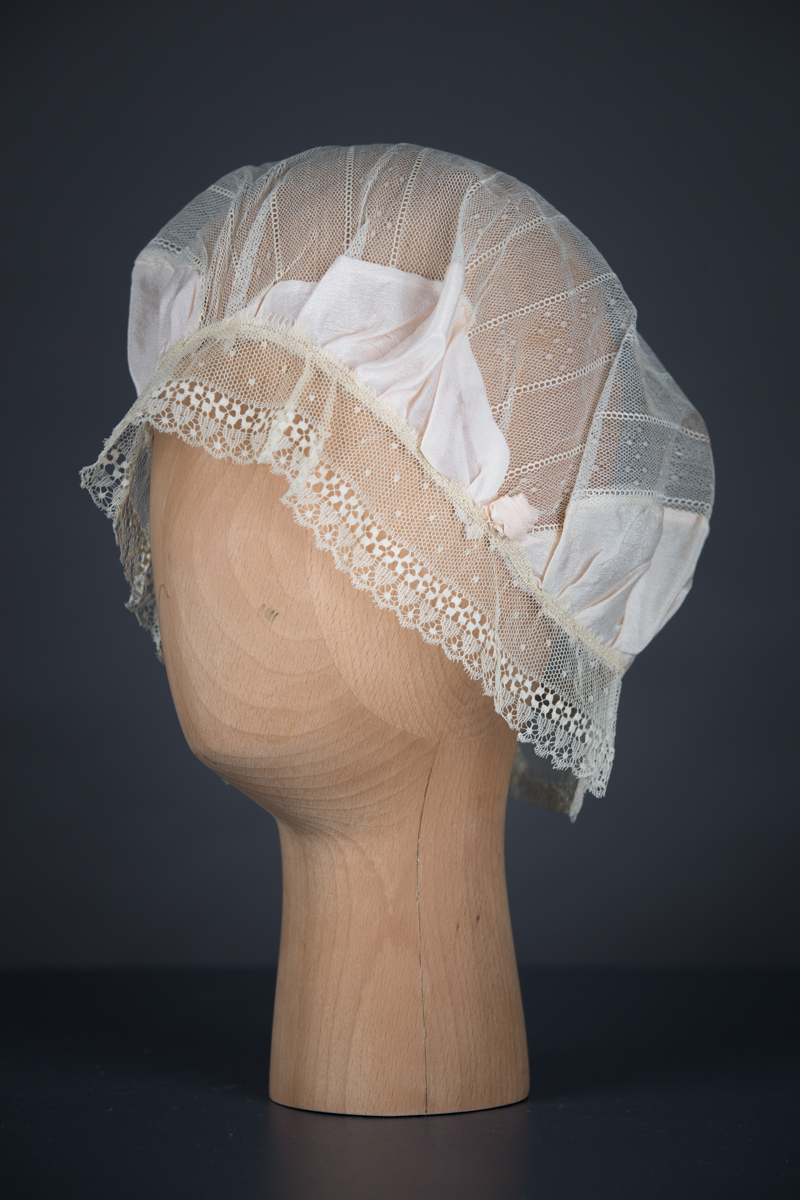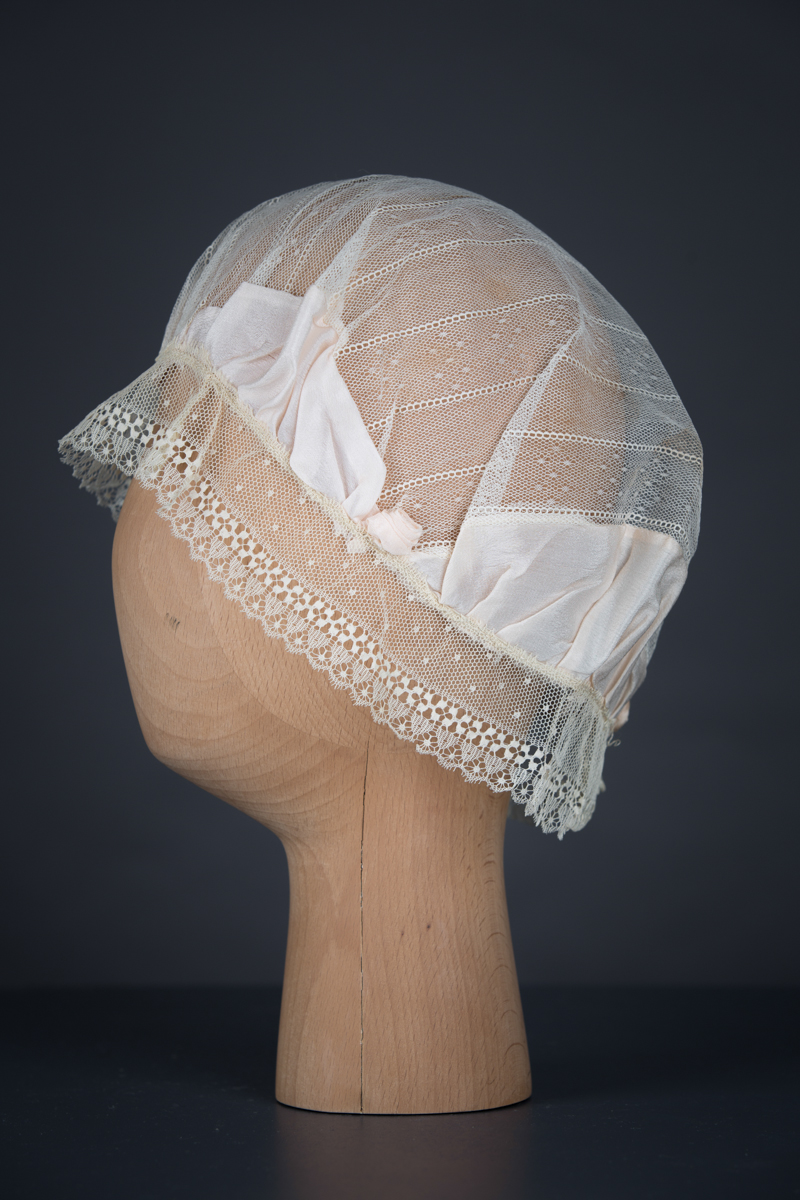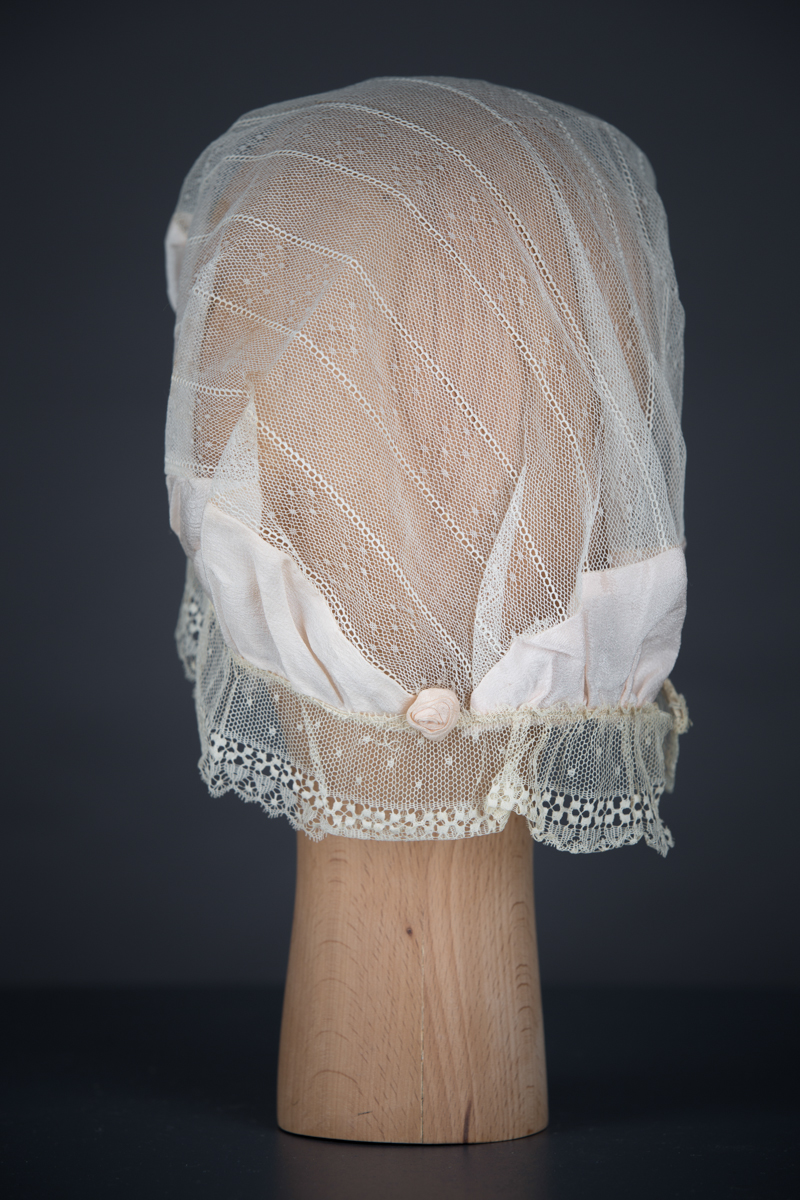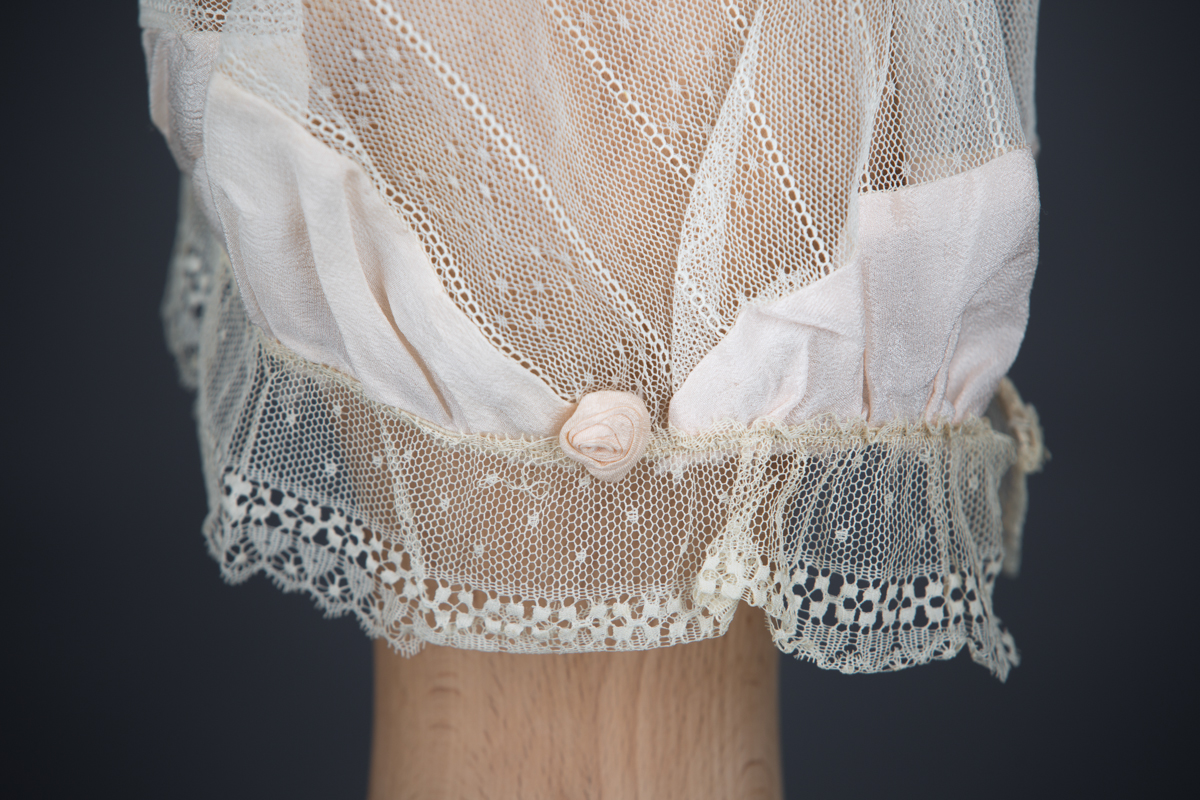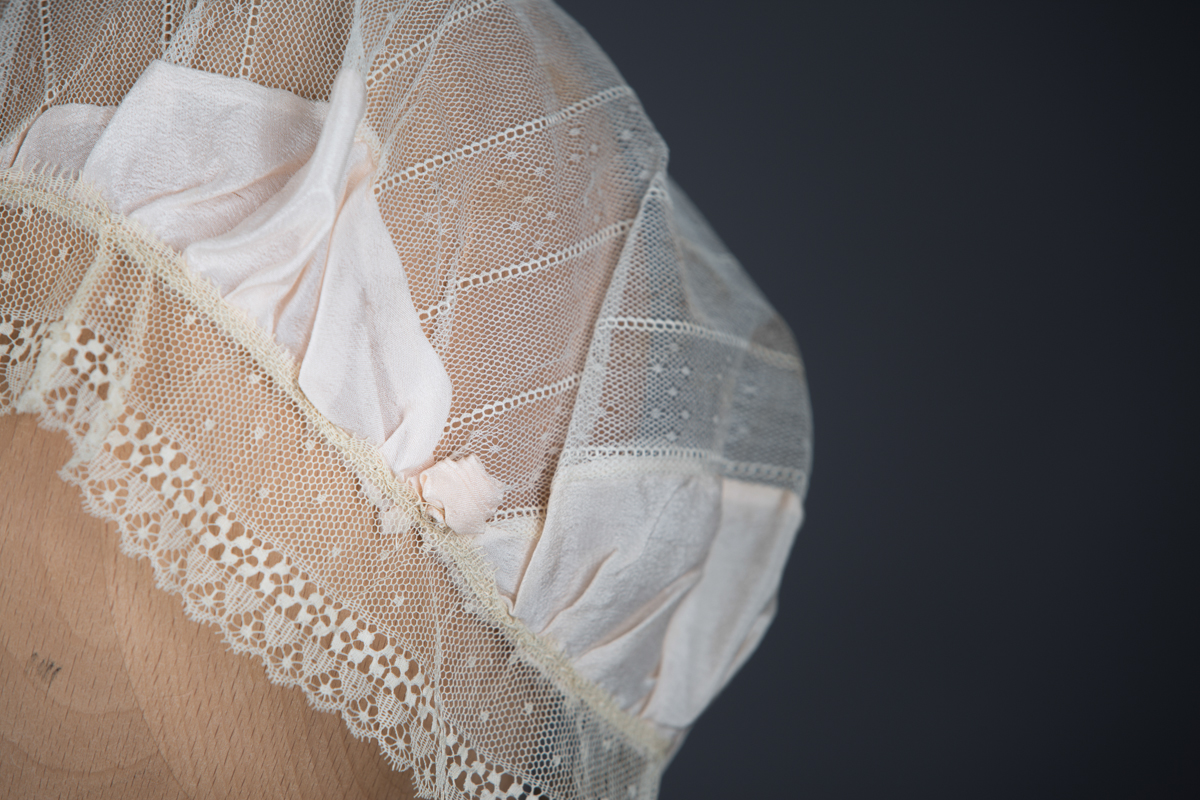Date:c.1920s
Origin: Great Britain
Fabric: Silk habotai and lace
Brand: Custom made
A boudoir cap made of an ecru leavers lace with panels of pale pink silk habotai. It is embellished with silk rosettes at the back and sides of the head. This variety of leavers lace would have likely been intended to be cut down to strips of trim, but has instead been used as a fabric.
The boudoir cap is a type of lingerie headwear, most commonly worn during the nineteenth to early twentieth centuries. It was originally worn over undressed hair, worn in the privacy of the boudoir alongside nightwear. In the 1910s and 1920s, it would be commonly worn to protect shorter hair styles during sleep. As the designs became more and more elaborate towards the 1930s, it began to be considered more of a decorative hair net. Like other forms of lingerie, boudoir caps were usually made in fine fabrics such as lace, tulle and satin. Embellishment was often profuse, with techniques such as ribbonwork being particularly commonplace.
From the collection of Karolina Laskowska
